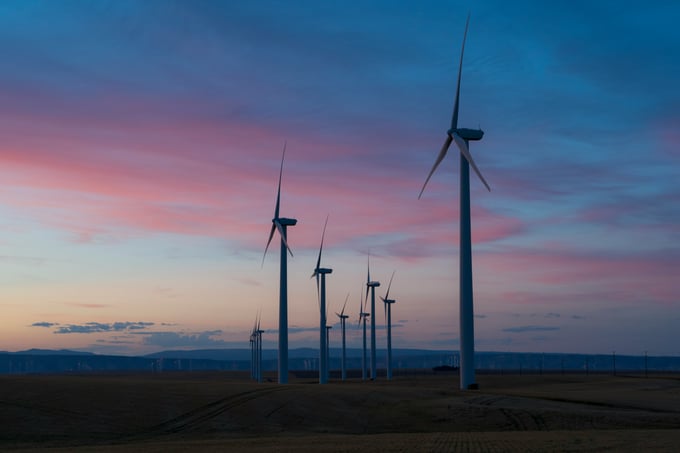The biggest Distribution Network Operator (DNO) in the Netherlands continues to pioneer super-accurate reporting of its carbon emissions – with help from ENTRNCE.
ENTRNCE’s parent company Alliander shook up the industry last year with a completely new approach to calculating its energy and carbon reporting. It has just published a second annual report using the same method, which is significantly more accurate than the conventional one.
On the face of it, the traditional method seems reasonable. You take your total electricity consumption for the year and multiply it by the emissions factors – that is, the average amount of CO2 emitted per unit of electricity consumed by different activities. But renewable energy is emissions-free and shouldn’t be included. You therefore calculate the total renewable energy the organisation has generated or purchased, and subtract it from the total.
The problem: doing these calculations for an entire year’s worth of consumption is a very broad-brush approach. The “renewables” part of the equation is calculated by adding up how many renewable Guarantees of Origin the business bought that year – which, as we have explained, can make the energy you buy seem greener than it is. There is no attempt (or indeed incentive) to link the energy consumed in a particular day, week or month with the energy being generated at the time, or work out how green it really was.
When is green really green?
We know that “100% renewable” energy sourcing is a myth, because renewable sources like wind and solar are naturally intermittent. The reality is that grid energy is always a mix – but it doesn’t have to be a mystery. Here’s where ENTRNCE comes in.
Our Matcher tool can provide data on the exact mix of energy an organisation is consuming, at 15-minute intervals. This gave Alliander a highly accurate and granular picture of the true carbon intensity of the grid for every half-hour of consumption. This raises the bar higher than the standard way of reporting, which uses an average emission factor for the entire year’s consumption. Alliander used the Matcher to discover the carbon intensity of all the energy it sourced, whether from its on-site solar panels or from the grid.
Clean energy score
In 2023 Alliander became one of the first companies in the world to carry out its carbon reporting with this level of accuracy – providing a blueprint for other companies to follow. Using the Matcher, ENTRNCE calculated Alliander's matching score, based on consumption via network losses, electricity usage in offices, and electric vehicle (EV) mobility. These were compared against the self-generated solar power and purchased wind energy via Guarantees of Origin. The matching was done on a quarter-hourly basis to align with the Dutch electricity market.
Alliander’s first score a year ago was 59% and this year it has risen to 61%. These figures may seem unimpressive, especially in the context of greenwashed claims to be sourcing “100% renewable energy”. But Alliander’s method is futureproof, and credible, preparing it for tightening reporting standards and scrutiny over its green claims. And, being armed with the real data means the company can make better decisions on how to drive down those emissions – perhaps by diversifying its generation technology, perhaps by adding storage or exploring demand response.
It's great to see our parent company pioneering genuine transparency in the energy sector. The 2023 annual report, packed with information, is out now in Dutch. It will be published in English on 4 April 2024.

